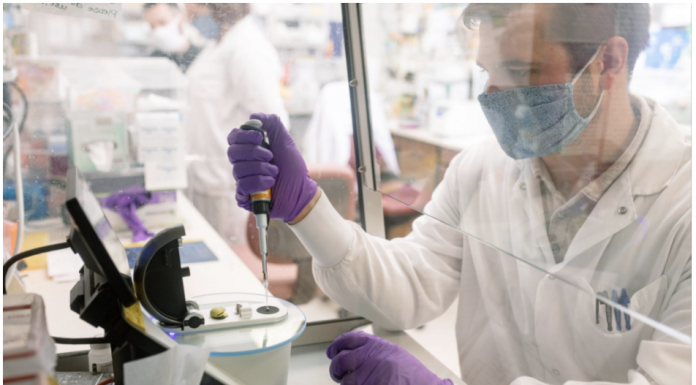Michigan Health Lab – Maybe you saw it on social media. Heard it from a friend or relative. Got it in an email. Or have just been wondering silently to yourself.
No matter where you heard that claim about the COVID-19 vaccines, it might be making you wary of getting vaccinated when it’s your turn.
Or maybe you’re pretty sure the scary claim is false, but you need a plain-English explanation of why.
You’ve come to the right place. The Michigan Health Lab collected some of the most widespread rumors, claims, myths and worries about the COVID-19 vaccines, and checked them out with help from Michigan Medicine experts.
If lies and myths about the vaccines spread so much that many people decide not to get vaccinated, more people could die and the pandemic will last longer.
It’s important to check out claims that you hear, with reputable sources of information, and share good information with others. It will take all of us to fight back against deadly misinformation.
Heard something that’s not listed here? Email us at [email protected] and we’ll look into it.
FACT: We have COVID-19 vaccines available now because science and health experts responded swiftly to a deadly public health crisis
Myths and fears: Many people have voiced concerns about how quickly the vaccines have become available, how short the testing process was, or how political the whole vaccine production effort has gotten because of the national election.
There are claims that it was rushed, or that “corners were cut” in the clinical trials or the government’s safety review and approval process.
The bottom line: The entire process went faster than usual for explainable reasons, but still followed the usual steps for testing and review.
The most important reasons for speed: modern scientific tools are faster than old ones, and there was a worldwide effort to reduce or remove the usual barriers and delays in vaccine research, production and distribution.
A large number of ordinary people volunteered for clinical trials of the vaccines, which meant we got the answers to key questions about safety and protection quickly.
The vaccines still received independent review and approval, under emergency rules put in place before this pandemic for situations where the public’s health is at serious and immediate risk, as it is now.
More detail: The effort started with rapid research on the genetics of the coronavirus, starting in January. Scientific tools have made it possible to “read” the genetic material of a virus in mere days, where it once took months.
Meanwhile, scientists and vaccine makers had already been working for years to develop a “platform” approach to making vaccines against new viruses. Think of it like a drill that can accept different sizes of drill bits, or a food processor that can use different kinds of blades.
This “platform” uses messenger RNA (mRNA) as the delivery agent to teach the body how to recognize and fight a new virus. The first vaccines to reach the market use this “platform” strategy. The other vaccines that are still being studied are based on vaccine strategies that have been used in the past, but these take longer.
Part of the delay in studying a new vaccine is the time it takes to design a high quality and safe clinical trial. For COVID-19, international organizations came together to agree on a study outline and goals.
Another big difference is that governments agreed to pay companies to produce large amounts of their vaccines in advance, even while trials were testing how well the vaccine actually worked in people.
If those clinical trials showed a vaccine didn’t work, or had unacceptable side effects, it would be thrown out – but the company wouldn’t lose money.
On the other hand, if the trials showed a vaccine worked and was safe, the companies would be ready to ship it out – which is what’s happening now.
Another source of speed: The fact that the pandemic was so out of control in the U.S. and other countries this summer and fall, when the clinical trials were going on.
Because the people who volunteered to get the vaccine had a high chance of being exposed to the virus in their everyday lives, researchers could see within months how many of the ones who got actual vaccines got sick with COVID-19, compared with the people in the groups that got the placebos.
The approval process through the FDA had an independent panel of experts look at the data from the studies, and ask tough questions of the vaccine makers before voting to approve it on an emergency basis.
The FDA is also requiring the companies to track what happens to people who took part in its studies, and the CDC will monitor what happens to people who get the vaccine outside the studies.
TO BE CONTINUED …
(c) Michigan Medicine, Creative Commons Attribution 3.0 license.



